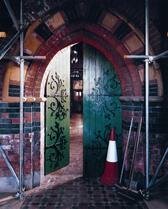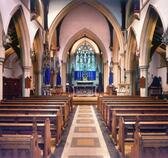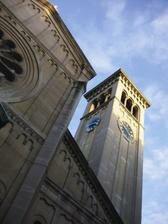Places of Worship
Since 1994, Local Planning Authorities have had a clearly defined role in the consent processes set up by the six Christian denominations who have satisfied the Government’s criteria for ‘Ecclesiastical Exemption’ from listed building, scheduled monument and conservation area consents. No other denominations and faiths are exempt and so need to apply for these consents in the usual way. All places of worship that are being used, regardless of denomination or faith, require planning permission for proposed works in the normal way.
Once listed ecclesiastical buildings cease to be used for worship and become redundant, the exemption is lost. The Church of England has a statutory redundancy process that addresses the future use or demolition of the building. The Local Planning Authority is a statutory consultee in this process.
The maintenance of some closed Church of England churchyards is the responsibility of the local authority, but ownership remains with the Church and the memorial owners and faculty jurisdiction still applies. Faculty jurisdiction will also apply to local authority owned cemeteries that have been consecrated. If in any doubt, the Diocesan Registrar should be consulted.
Ecclesiastical Exemption for places of worship from scheduling, listing and conservation area consents
Exemption for “ecclesiastical buildings for the time being in ecclesiastical use” from scheduling was first included in the 1914 Ancient Monuments Act. The Church of England then overhauled its own control system, the Faculty Jurisdiction, which is a judicial system governed by primary legislation. It is administered through Diocesan Advisory Committees (DAC) which seek to ensure that proper protection is given to the “architectural, historical, archaeological and artistic merits” of churches in use. The DACs are coordinated by the Council for the Care of Churches (CCC).
Although Church of England places of worship came to be listed, they were exempted from any listed building or conservation area consent procedures or repairs notices as the Faculty system was in place. Until 1994, other denominations and faiths were deemed to be included too, even though only the Methodist Church had any similar internal controls over their buildings.
Lists began to include more non-Church of England places of worship and once Government repair grants were introduced in 1977, negotiations began to define the exemption and introduce wider public involvement in denominational control procedures. These culminated in the 1994 Ecclesiastical Exemption Order and the Code of Practice included in PPG15.
Six Christian denominations have qualified for exemption by meeting the requirements of the Order; they are the
- Church of England
- Church in Wales
- Methodist Church
- Roman Catholic Church
- United Reformed Church
- Baptist Union
Please note that not all the buildings apparently within these denominations are exempt. Apart from the ‘Peculiars’ (below), not all Baptist and Methodist congregations come within the control system of the central organisation. If in any doubt, checks should be made with the denomination concerned as to whether a particular place of worship comes within the exempt denomination’s procedures.
Non-exempt denominations and faiths
All other listed places of worship belonging to other Christian denominations and faiths are subject to the same controls as any other listed buildings. PPG15 paragraphs 8.10 -8.14 set out the special considerations that need to be taken into account when dealing with such an application, particularly where it concerns alterations to the interior. Background information about such denominations and faiths can be found on their websites, some of which contain historical and architectural information too.
Peculiars
Article 6 of the Order relating to ‘Peculiars’, that is, ecclesiastical buildings in ecclesiastical use but outside denominational control, has yet to be amended. This means that many institutional chapels belonging to schools, colleges, hospitals and religious institutions and in use for worship, are currently exempt from any State controls (except planning permission) but are not subject to their own denominational controls either. They are predominantly within the Church of England and the Roman Catholic Church, where the congregation is outside the diocesan bishop’s jurisdiction. The interiors of chapels which are entirely enclosed within a listed building e.g. a chapel in an historic house, are also included, as the Order covers ‘buildings or parts of buildings in ecclesiastical use’. However, the extent of the exempt area will need to be determined in each case.
Cathedrals
Church of England Cathedrals are subject to the statutory Care of Cathedrals Measures and Roman Catholic cathedrals are included within the denomination’s Historic Churches Committee system. No other exempt denomination has any cathedrals in England, so other cathedrals e.g. Orthodox, are subject to normal listed building and conservation area controls. All cathedrals require planning permission in the normal way.



